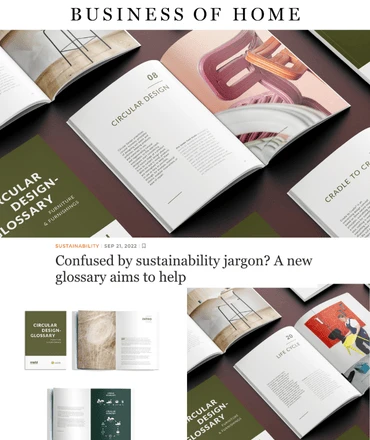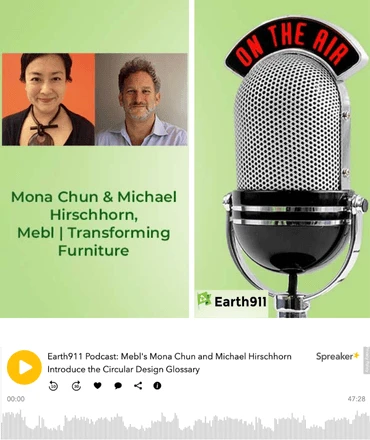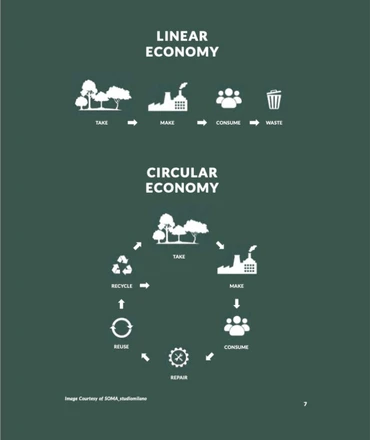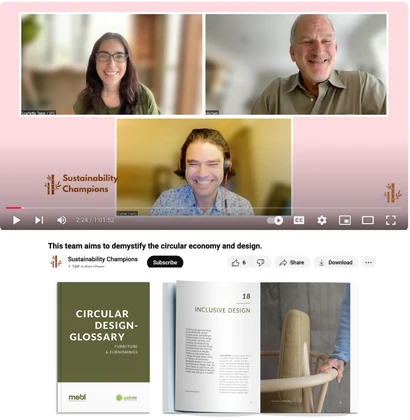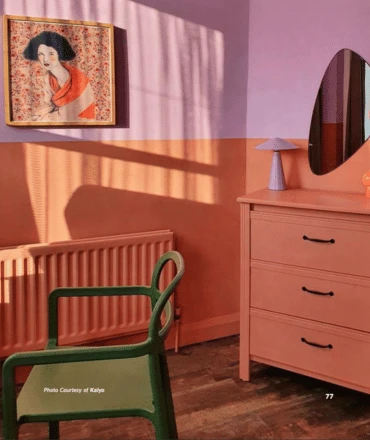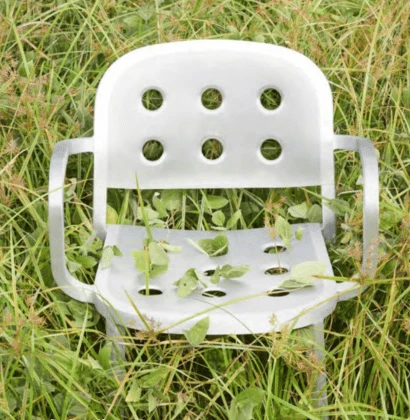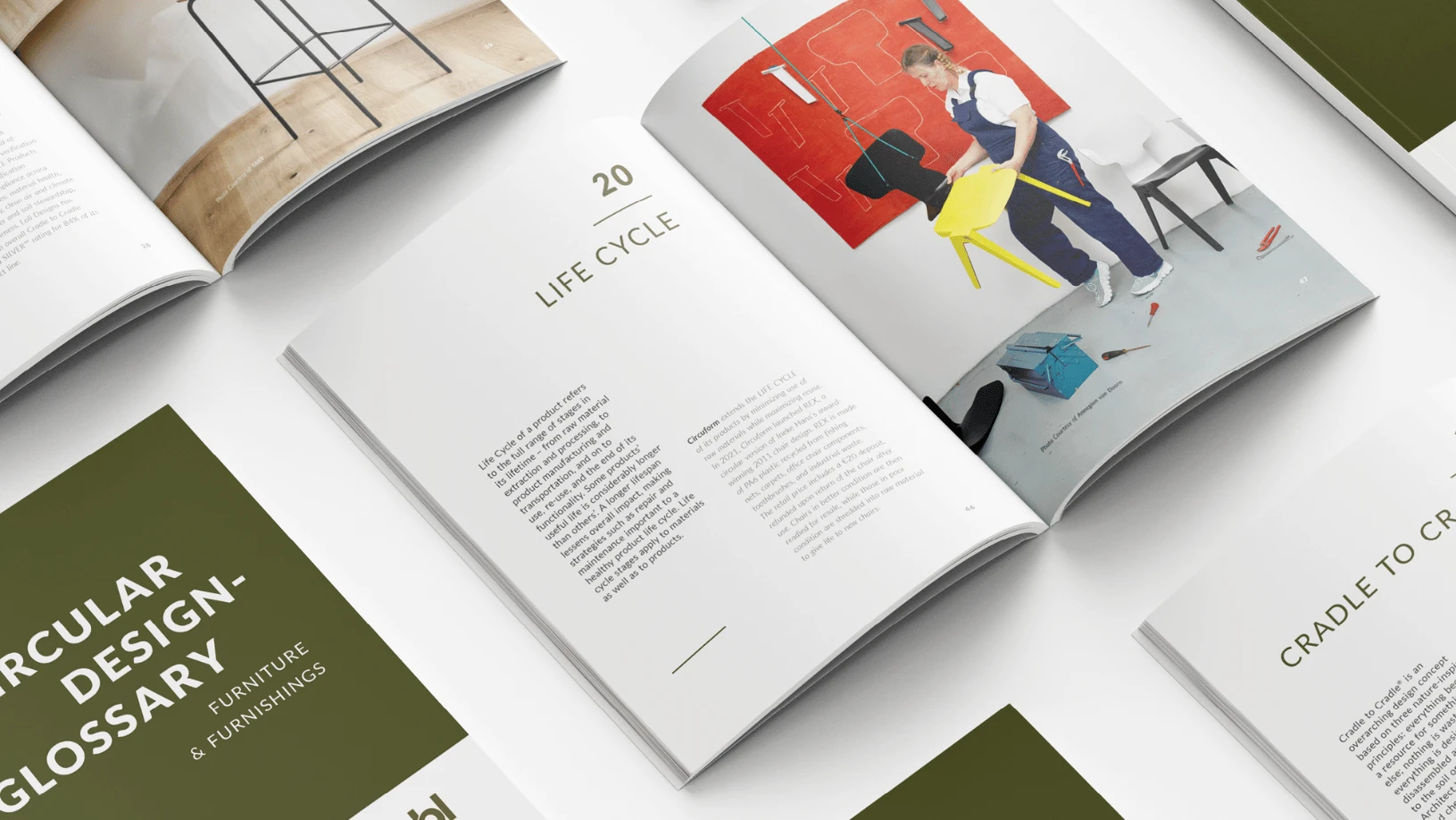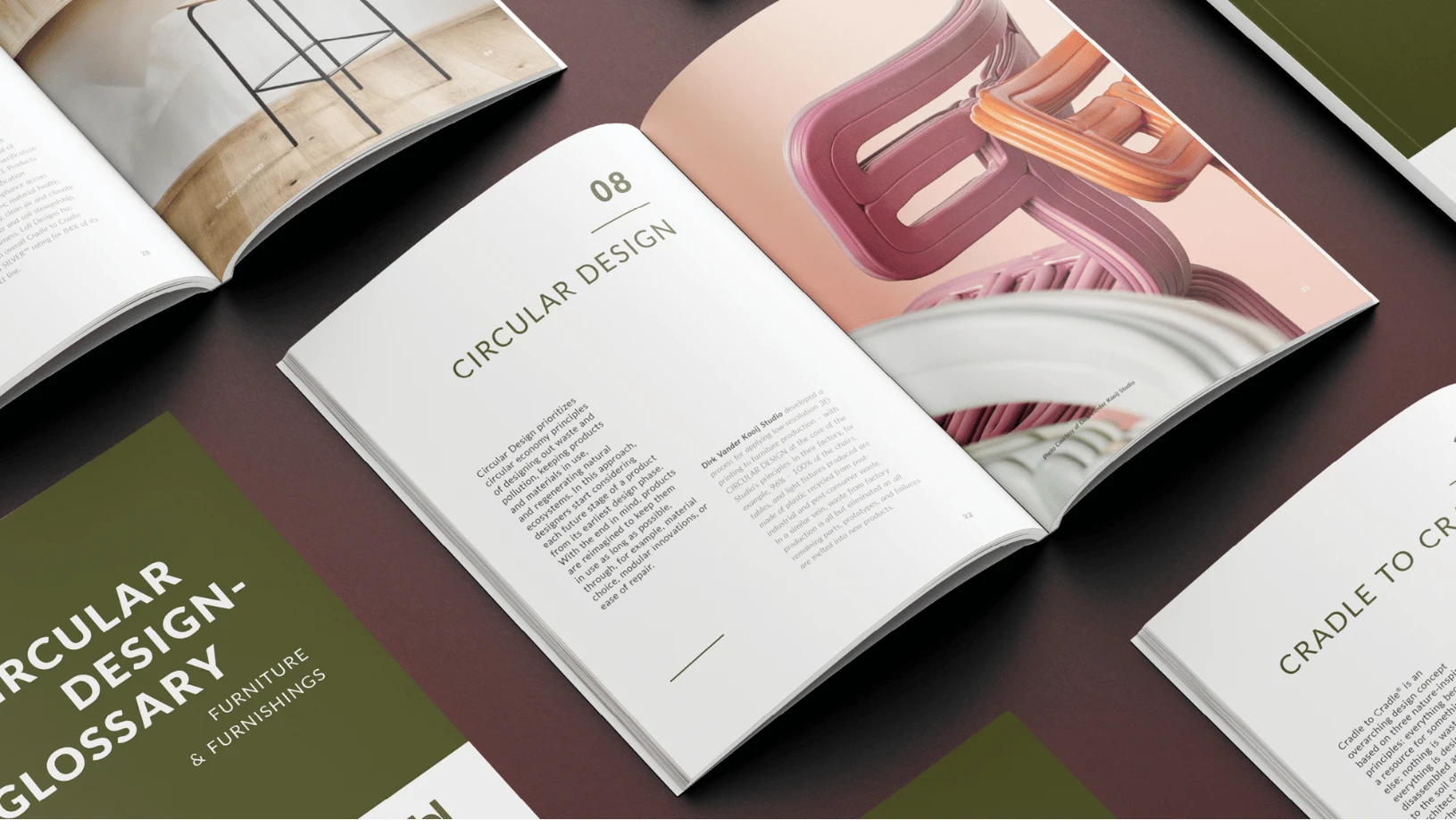
Circular Design Glossary
An action guide for the furniture & furnishings industries
Shared language is key to moving to a 'circular future' -
What does 'close the loop' really mean?
What are 'embedded impacts'?
How does 'biodesign' differ from 'biomimicry'?
Designed to help you turn circular concepts into concrete, implement-able practices.


